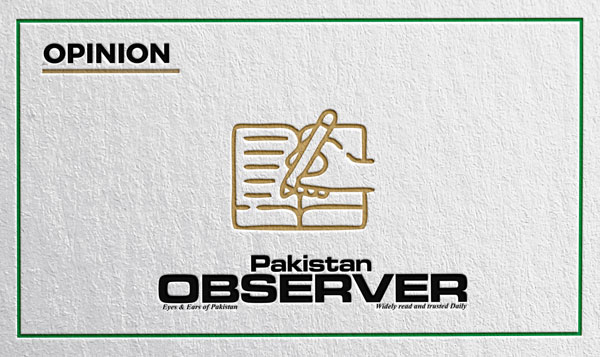Articles and letters may be edited for the purposes of clarity and space.
Breaking barriers
This letter refers to “limited paths” by Moin Ahmed Awan in a contemporary publication. It’s true that most of the students have two options: medical or engineering. With adding one point this also happens with girls and they are mostly pushed to medical due to limited awareness and knowledge about the other fields. It’s a preconceived notion that a girl always will choose medical and a boy always engineering. A concept that only medical and engineering can give a sustainable future and no other field can have diverse opportunities. It’s society’s limited mentality which limits the career options for both girls and boys which deprive the creativity and personality development. Every time success doesn’t rely on these two fields. If you can write 250 articles in FSC, so you can do anything. Come out of this thought that medical and engineering is the end. Think big but not limited. It’s a crucial time that every field should equally prioritize and value personal interest and ability.
AREEBA ALTAF
Larkana Sindh
Pak-China: United for growth
China is actively advancing its cooperation with Pakistan in various sectors to benefit the people of both nations. According to some media reports, China has introduced an Education Expansion and Poverty Alleviation Project focused on South Punjab.
This initiative aims to provide education to out-of-school children, combat poverty and curb extremism in the underprivileged areas of the region. Additionally, the plan includes small-scale development projects to enhance the livelihoods of the local population.
Both nations have agreed to collaborate on diverse projects, with China extending its support to Punjab in areas such as hydropower, water management, agriculture, electric transport, waste management and environmental improvements.
As part of this initiative, Beijing will establish a Punjab Clean Air Working Group, while proposals for twinning cities and provinces have also been presented by the Chief Minister. Due to these efforts, Punjab is set to become one of the most prosperous and economically powerful regions in the country.
It seems that foreign agencies are behind acts of terrorism in Pakistan, aiming to disrupt Pak-China friendship. However, the bond between the two nations remains unwavering, and both are committed to countering any conspiracy against their mutual trust and cooperation. Currently, approximately thousands of Chinese citizens reside in Pakistan, including those working on CPEC projects. Their partnership continues to serve as a model of resilience and determination.
AHSAN UL HAQ SHAIKH
Chunian
Innovative nanotechnology approach
In the rapidly evolving field of medical research, Pakistan is making significant strides through innovative approaches in nanotechnology. A groundbreaking study by Miss Umbreen Anwar, Dr Adeel Sattar, and their team at the Department of Pharmacology and Toxicology, University of Veterinary and Animal Sciences, Lahore, introduces a novel treatment combining azithromycin with cetirizine (an anti-allergy medication). This research focuses on using chitosan-based nanoparticles to treat common but severe respiratory infections caused by antibiotic-resistant bacteria.
The researchers successfully developed nanoparticles to deliver azithromycin more effectively, potentially reducing the required dosage and overcoming bacterial drug resistance. These nanoparticles demonstrated an enhanced ability to carry the antibiotic, with laboratory tests revealing that they could resensitize resistant bacteria, such as Klebsiella pneumoniae and MRSA, to the antibiotic. Impressively, over 70% of the drug was successfully encapsulated within the nanoparticles.
The nanoparticles also exhibited controlled drug release, with higher antibiotic release observed in acidic conditions, akin to the environment in human lungs. This targeted delivery system proved effective against resistant bacteria, highlighting its potential as a powerful tool for tackling infections that no longer respond to traditional antibiotics. Furthermore, the study revealed that the nanoparticle-based treatment caused less damage to human cells compared to the antibiotic alone.
However, at very high doses, some indications of genetic damage were observed, suggesting the need for further safety evaluations. This innovative approach, combining azithromycin-loaded nanoparticles with cetirizine, represents a promising solution to combat antibiotic-resistant infections.
UMBREEN ANWAR,
DR ADEEL SATTAR
Lahore









